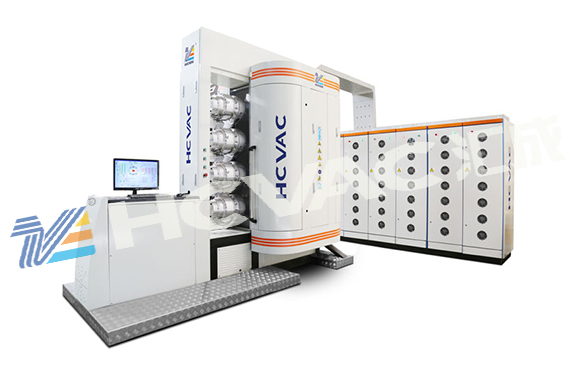Many friends asked me about the vacuum technology of the multi-arc ion vacuum coating machine. At that time, I explained a lot to my friends, but I couldn’t say it completely. Today, I will introduce it to you in detail:

Multi-arc ion plating uses the method of arc discharge to directly evaporate the metal on the solid cathode target. The evaporated material is the ions of the cathode material released from the cathode arc discharge. This device does not require a molten pool, and is connected by the evaporated target. The cathode, the vacuum chamber is the anode, when the trigger electrode and the cathode target are in contact with each other suddenly and instantaneously, an arc will be caused, and a strong luminous cathodic arc spot will be generated on the surface of the cathode. The diameter of the spot is below 100µm, and the current density in the spot can reach 103~107A /cm2 The material in this region then evaporates and ionizes instantaneously. The cathode arc spot on the cathode surface moves randomly at a speed of tens of meters per second, and an external magnetic field is used to control the trajectory and speed of the bright spot. In order to maintain the vacuum arc, the voltage is generally required to be -20 to -40 V. The principle of multi-arc ion plating is based on the theory of cold cathode vacuum arc discharge, which holds that the electric charge transfer during the discharge process is achieved by the simultaneous existence and mutual restraint of two mechanisms, field electron emission and positive ion current. During the discharge process, the cathode material evaporates in large quantities, and the positive ions generated by these vapor molecules generate a very strong electric field within a short distance near the cathode surface. In the vacuum, and positive ions can account for about 10% of the total arc current, the metal ions absorbed to the surface of the cathode form a space charge layer, which generates a strong electric field, so that the points on the surface of the cathode with small work function (grain boundaries or cracks) start to emit electrons. Individual points with high density of emitted electrons have high current density. Joule heating increases the temperature and generates hot electrons, which further increases the emission of electrons. This positive feedback effect causes the current to be locally concentrated. Due to the Joule heat generated by the local concentration of the current, the surface of the cathode material is locally explosively plasmaized, electrons and ions are emitted, and discharge traces are left. Molten cathode material particles are also released at the same time. A part of the emitted ions are sucked back to the cathode surface, forming a space charge layer, which generates a strong electric field, which in turn causes a new point with a small work function to start emitting electrons.
The multi-arc ion vacuum coating machine coating technology has the following characteristics:
Advantages: It can be installed arbitrarily to make the film uniform. The external magnetic field can improve arc discharge; make the arc finer; speed up the rotation; refine film particles; accelerate charged particles. The high metal ionization rate is beneficial to the uniformity of the film and the improvement of adhesion, which is the best process for realizing ion plating. One arc is multi-purpose, which is not only an evaporation source, but also a pre-bombardment purification source and an ionization source.
Disadvantages: Under high power, it is easy to generate large metal particles, which affects the quality of the coating, and the arc discharge of some targets is unstable. The methods of reducing droplet generation include: reducing the discharge power density, increasing the speed of arc spot movement, strengthening cathode cooling measures, and using magnetic filtration and other schemes.



